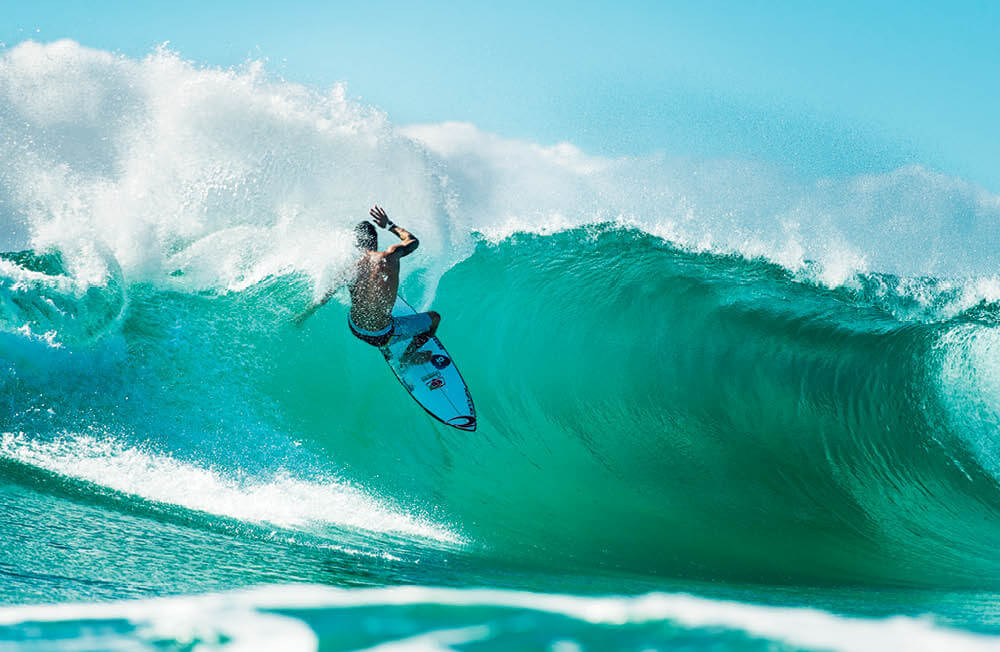Is Brazil Actually The World’s Best Surfing Nation?
Share
When looking at the current class of the World Surf League Championship Tour, something becomes immediately apparent: Brazil is dominating.
On the Men’s 2018 Championship Tour Brazil has 11 of the 34 surfers (up from eight last year). That’s a whopping 32% of the roster, while Australia only has eight surfers of the 34 (down from 11 last year), 23% (for the record, Hawaii has four surfers and the US has six).
That’s a significant shift in surfing, and one that should definitely be noted as the sport and culture evolves. Has the torch been passed to Brazil as the most dominant surfing nation on the WSL? If the story ends there, the answer is: Yes. But the story doesn’t end there, and the answer actually is: Uh, not really. Not at all.
The major thing that’s being ignored when we look at those numbers is where does female surfing fit into this narrative of Brazil being the new powerhouse of international competitive surfing? In 2018, that’s something that really shouldn’t happen (though not at all that surprising), particularly as surfing has one of the better parities between elite men and women in world sport. And when we take a look at where the nations rank divvied up using the same method we did with the men, it’s a drastically different picture.
On the Women’s 2018 Championship Tour, Brazil has just one of the 16 surfers on the tour full time. Silvana Lima, of course. Which makes Brazil’s stake a dismal 6.25% of the Women’s CT. While Australia has six of the 16 surfers on the CT, which makes up 37.5% (again, for the record, Hawaii and the US both have four surfers on the women’s CT, respectively).
Added together, of the 50 surfers on the WSL CT, Brazil has 12, Australia has 14, USA ten and Hawaii eight (though if we group Hawaii with USA, as we would in the Olympics, the Land of the Free has the most WSL surfers with 18). That gives Australia 28% of surfers represented on the tour, and Brazil 24%. While close, it’s hard to hand over the title of world’s best surfing nation just yet.
And that’s the state of play only when scaled like this. The numbers would be skewed even further if we took into account the fact female surfing is given less than half the space men are on the Championship Tour (16 vs 34). You could argue, scaled appropriately, that Brazil would be even further behind that World No.1 spot as surfing’s top dawg.
Then what about success once on the CT? What truly is the best metric for dominance by a nation? Is it spots on tour? Event wins? The end of season rankings? Whichever way you put it, with Australia owning the top three spots on the women’s CT in 2017, with Tyler Wright, Steph Gilmore and Sally Fitzgibbons finishing first, second and third (and Australians winning five out of ten Women’s CT events in 2017 too), it again looks very good for Australian surfing.
The story gets even worse for the state of female surfing in Brazil when we hop on over to the QS and see that after Silvana Lima, who requalified at third, the next highest rated Brazilian woman is Nathalie Martins at 76th, and then Camila Cassia at 99th. Three surfers in the top 100 of the women’s QS does not sound like a stat boasted by the world’s most dominant surfing nation.
Certainly with the “Brazilian Storm” of the past half-decade the tide has risen for Brazilian surfing, but it has failed to float all its boats.
This points to some important questions that Brazilian surfing needs to ask itself and address, and questions I won’t go into here – Brazil is a country I have never been to with a culture I know very little about (though, Casey Butler, over on The Inertia, wrote an excellent piece about this issue that’s worth reading) –but with extreme bias and ugly nationalistic pride, I’ll say this: Australia is still the best surfing nation on earth, and we are only that way because of how bloody good Australian women’s surfing is.








